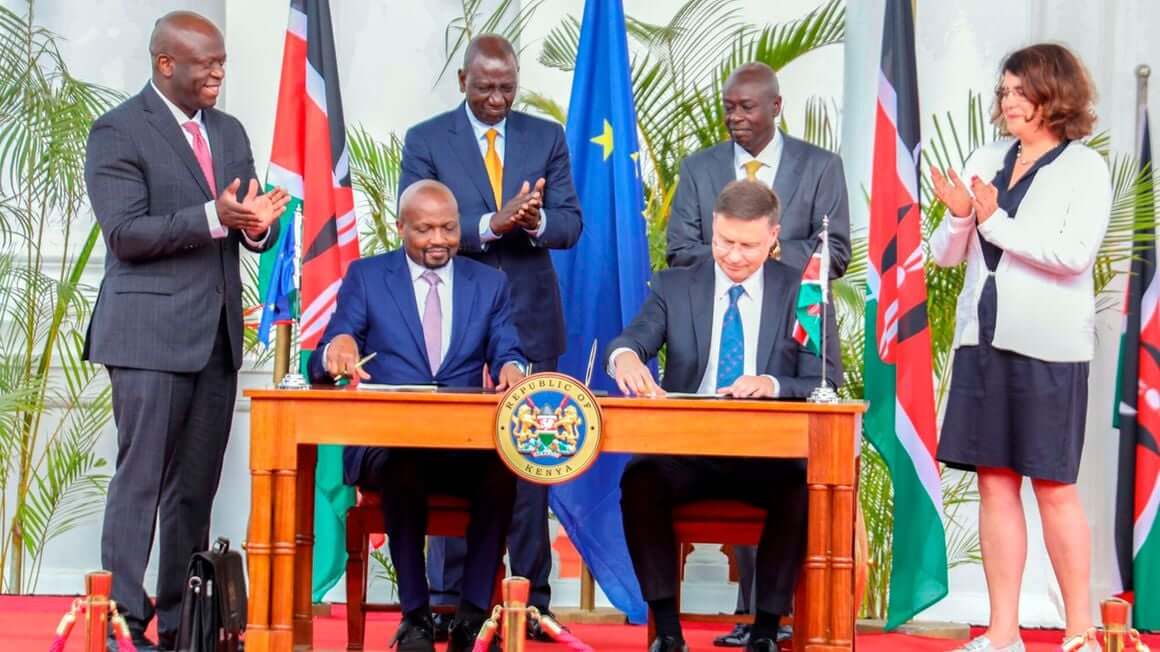
Our Projects are
Transforming African Trade
Quick Contacts
2nd Floor, Fidelity Insurance Centre Waiyaki Way, Westlands

The recently inked Economic Partnership Agreement (EPA) granting Kenya duty-free access for over 80 percent of exports into the European Union represents a milestone for the country.
However, the unilateral nature of the pact and resulting tensions with regional partners underline the delicate diplomacy required to balance national and collective interests.
As the largest East African economy, Kenya’s bigger challenge is converting preferential European access into an engine of growth for communities across the region.
Given recent history, scepticism from fellow East African Community (EAC) members over Kenya forfeiting regional solidarity is understandable. The original EU-EAC EPA signed in 2014 was held up over reluctance by Tanzania and Uganda to open their markets, resulting in the current Kenya-specific deal.
With other regional commitments like the AfCFTA also in play, this bilateral tactic reinforces impressions that the EAC lacks cohesion in engaging with external parties. There is concurrently a sense that Kenya leveraged its economic muscle to secure a sweetheart arrangement without considering regional impacts, especially around trade diversion.
Kenya could, however, employ savvy diplomacy and commercial policies to change the narrative. Tanzania’s and Uganda’s wariness stems from fears of losing tax revenues and being swamped by EU goods re-routed through Kenya.
But with a 15-year transition period, gradual impact on regional tariffs and exemptions for sensitive sectors, these impacts can be jointly evaluated and managed. Open communication and data exchange with EAC authorities would build confidence in Kenya’s commitment to mitigate harm.
More broadly, Kenya can spearhead collective gains by harmonising standards to enable agile cross-border value chains, starting with countries expressing interest. Streamlining sanitary-phytosanitary and technical requirements while reducing non-tariff barriers would integrate regional production networks to meet Europe’s needs cost-effectively.
Strategic sectors like pharmaceuticals, horticulture and consumer foods lend themselves well to such strategies if reciprocal back-end policy alignment occurs. This collaboration would also apply for services trade and digital connectivity, facilitating cross-border commerce.
Besides using bilateral access to advance regional coordination, Kenya can leverage preferential European links to become an export gateway for neighbours.
Uganda and Rwanda both rely on Kenyan infrastructure to access seaports for global trade. With Europe opening up, Kenya’s transport network and special economic zones can be launchpads helping firms from across East Africa plug into continental value chains.
Exporters can build scale at home while using Kenya as a consolidation hub for overseas. A wider bloc united by mutual interests would dilute rather than intensify trade frictions.
Crucially, Kenya’s upgraded EU relationship need not jeopardize benefits under other arrangements, especially AGOA and AfCFTA, if consciously integrated into a holistic trade strategy. The prime example here is apparel, where clothing manufacture for duty-free export to the US under AGOA has experienced growth.
Industry inputs sourced competitively from Asia can now harmoniously complement AGOA’s continued manufacturing preference while high-end niche garments access Europe under the new EPA dispensation.
Similarly for agribusiness, processed foods can target Western markets under the EPA while intermediate ingredients flow across Africa under AfCFTA frameworks to optimize continental resources.
Undeniably the EPA generates complex layers intersecting pan-African integration and Europe ties. But conscious policy harmonization rooted in commercial pragmatism over politics offers routes to balance and progress on all fronts.
The rival East versus West economic orbits need not be zero-sum games, whether in Kenya or the EAC’s worldview.
All said, Kenya’s European deal reshapes its identity from regional leader to prospective pioneer. Whether through commercial savvy, diplomatic wisdom or reputational focus, Kenya now bears responsibility to chart paths benefitting Eastern Africa’s collective advancement.
Kenya itself has the scale to reap substantial near-term gains alone. But its greatest prize lies in empowering a robust regional economy equitably integrated with the world. Visionary leadership seizing this chance to pull Eastern Africa up in its wake would be the ultimate validation of Kenya’s global ascendancy.
Read original article
Disclaimer: The views and opinions expressed in this article are those of the authors and do not necessarily reflect the official policy or position of TradeMark Africa.